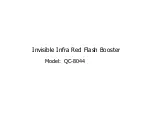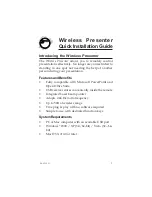
58
C H A P T E R 4
Teach Your Camera New Tricks
Enter the HDR method. The higher dynamic range is simply achieved by
making several images of the same subject: an image with the correct ex-
posure, an image two f-stops overexposed, and an image two f-stops un-
derexposed. You can go even further and make additional images: +4
f-stops, –4 f-stops, +6 f-stops, and –6 f-stops. Given a camera sensor con-
trast range of 8 LV (which should be a reasonable value for a compact
camera), we can capture a scene brightness range of 12, 16, or 20 LV with
this method.
There are a few rules to follow when creating such a bracketing series:
f
Zoom value, focus, aperture, white balance, and (if possible) sensor
speed must not be changed because such changes cause image
changes. All bracketing should be done by changing the shutter speed.
f
The sensor speed should be set to a low value, such as ISO 50 or ISO 100,
to avoid sensor noise.
f
There should be no moving objects in the scene. Some HDR composers
are able to remove moving objects (ghosts) from an image, but not al-
ways with good success. So beware of cars, moving people and animals,
and wind (leaves and branches move). At night, even the stars and the
moon can cause problems.
f
The illumination of the scene should not change during a bracketing
series. Otherwise, it will be difficult for the HDR composer to put the
images together correctly.
f
It is certainly an advantage to put the camera on a tripod, but modern
HDR composers are able to register the single images with each other
even if they are taken hand-held.
If all these conditions are met, you can set up your camera to shoot a
bracketing series:
f
Typically you would use a
TV Bracketing Value
of 2 and the
Bracketing
Type
“+/–”.
f
If you want the best quality, shoot RAW images. If you do, make sure
that the options
ALT
>
MENU
>
RAW Parameters
>
Only First RAW in Series
and
ALT
>
MENU
>
RAW Parameters
>
Exceptions
>
Disable Raw@Burst
are disabled.
f
You now have the choice of setting the camera to
Continuous
mode, or
of setting up the
Custom Timer
with 0 seconds delay and 3, 5, or even
7 shots. If you use
Continuous
mode, you need to count the pictures
yourself. The advantage of this mode is that you can pause the series
when somebody or someone moves into the scene. Just half-release
the shutter button and press it fully when you want to continue. The
Custom Timer,
in contrast, does all counting for you—you just have to
press the shutter button.
Summary of Contents for Camera
Page 1: ......
Page 2: ...The Canon Camera Hackers Manual ...
Page 3: ......
Page 4: ...Berthold Daum The Canon Camera Hackers Manual Teach Your Camera New Tricks ...
Page 19: ...10 CH APTER 2 Cameras and Operating Systems ...
Page 25: ...16 CH APTER 3 ...
Page 85: ...76 CH APTER 4 Teach Your Camera New Tricks ...
Page 213: ...204 CH APTER 6 ...
Page 253: ...244 AP PENDIX ...
















































